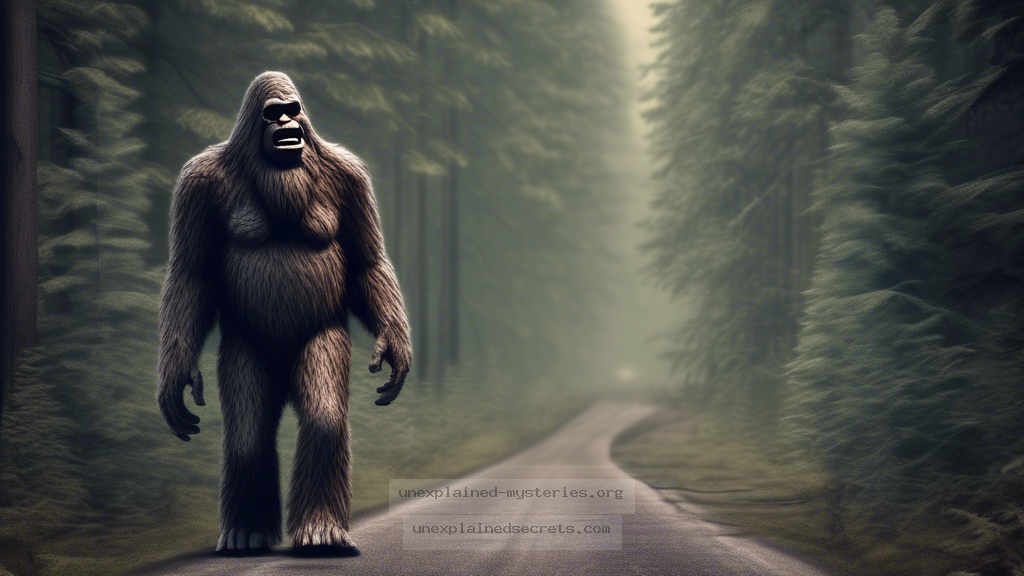What Secrets Lie Behind the Mysterious Patterson-Gimlin Film of Bigfoot?
What Secrets Lie Behind the Mysterious Patterson-Gimlin Film of Bigfoot?
The Patterson-Gimlin film, shot in 1967, has long been one of the most compelling pieces of evidence in the ongoing debate about the existence of Bigfoot. But what exactly does this film reveal, and why has it captured the fascination of cryptozoologists and skeptics alike for more than half a century? Understanding the context, implications, and controversies surrounding this film can shed light on the broader mystery of Bigfoot itself.
Historical Context of the Patterson-Gimlin Film
The Patterson-Gimlin film was recorded on October 20, 1967, in the Bluff Creek area of Northern California. Roger Patterson and Bob Gimlin, two men fascinated by stories of Bigfoot, embarked on an expedition to find definitive evidence of the creature’s existence. Their search culminated in a moment that would become a cornerstone of cryptozoological history.
The film captures a large, bipedal creature walking along the banks of Bluff Creek, and its authenticity has been the subject of much debate. At the time of filming, the concept of Bigfoot was already popularized through various Native American legends and other sightings across the United States, but Patterson and Gimlin’s footage brought it into the mainstream consciousness. This film is often regarded as a pivotal moment that sparked a movement, leading to the establishment of Bigfoot research groups and a surge in reported sightings.
Core Concepts and Theories Surrounding the Film
At its core, the Patterson-Gimlin film presents a fascinating case study of a creature that, if real, would challenge existing biological classifications. Cryptozoologists theorize that Bigfoot may be an undiscovered species of primate, perhaps a relic of the Gigantopithecus, a massive ape that roamed the Earth millions of years ago. The film raises questions about the creature’s habitat, behavior, and biological plausibility.
One prominent theory posits that the creature in the film displays characteristics of a previously unknown hominid. The way it walks, with a distinct gait and swinging arms, suggests a creature that is not only large but also uniquely adapted to its environment. This has led to discussions about the potential for such a creature to remain undiscovered in the dense forests of North America.
Practical Implications of the Film’s Evidence
The Patterson-Gimlin film has been scrutinized for decades, with proponents arguing that it provides compelling evidence of Bigfoot’s existence, while skeptics dismiss it as a hoax. One of the most significant implications of the film’s evidence is how it has influenced public perception of cryptid research. Organizations dedicated to the study of Bigfoot have used the film as a cornerstone for their investigations, leading to increased interest and funding for research into the creature’s existence.
Despite the skepticism surrounding the authenticity of the film, it has propelled discussions regarding wildlife conservation and the protection of habitats that could potentially house undiscovered species. If Bigfoot exists or existed, it raises questions about biodiversity and the need to preserve natural environments.
Alternative Perspectives: Hoax or Reality?
The debate over the authenticity of the Patterson-Gimlin film is fierce, with many arguing it is a well-crafted hoax. Critics have pointed to various inconsistencies, including the costume theory, where skeptics claim that the creature is merely a man in a suit. In 2004, a man named Bob Hieronymus came forward, claiming he wore a Bigfoot costume in the film. However, his claims have been met with skepticism, and many still support the film’s authenticity.
Additionally, the film has been analyzed using modern technology, including 3D modeling and forensic analysis, which have led some experts to argue that the creature’s anatomy does not align with known primates or humans. This ongoing investigation into the film contributes to the debate, illustrating the complexity of confirming or debunking such an extraordinary claim.
Common Misconceptions and Clarifications
Many misconceptions surround the Patterson-Gimlin film, often fueled by popular media and sensationalist interpretations. One common myth is that the film has been definitively proven to be a hoax, which is far from the truth. While there are arguments for both sides, no conclusive evidence has been established to either validate or invalidate the film.
💡 **Key Misconceptions**:
- The film is definitely a hoax.
- All Bigfoot researchers rely solely on this film for evidence.
- The creature’s anatomy has been thoroughly disproven.
Furthermore, many believe that all Bigfoot sightings are based solely on the film. However, the reality is that there have been thousands of reported sightings, each contributing to the larger narrative and ongoing research into the existence of Bigfoot.
Best Practices for Investigation and Study of Bigfoot
For those interested in investigating the phenomenon of Bigfoot, whether as a hobby or a serious pursuit, there are several best practices to consider. Documentation is paramount. Keeping detailed logs of sightings, environmental conditions, and eyewitness accounts can help build a more comprehensive understanding of Bigfoot behavior and habitat.
Field research should also include collaboration with wildlife experts and ecologists to ensure that investigations are scientifically grounded. Utilizing technology such as trail cameras, audio recorders, and even drone surveillance can provide valuable data, although ethical considerations regarding wildlife and preservation must be paramount.
⚠️ **Important Considerations**:
- Always respect wildlife and their habitats.
- Remain skeptical and open-minded about findings.
- Engage with established researchers and organizations for guidance.
Future Developments and Ongoing Research
The exploration of Bigfoot and its various mysteries, including the Patterson-Gimlin film, is far from over. As technology advances, new methodologies in genetic testing and environmental DNA (eDNA) analysis are being applied to the search for cryptids. Researchers are beginning to analyze soil and water samples for DNA traces that could hint at the presence of previously unknown species.
Furthermore, initiatives to educate the public and engage them in conservation efforts are gaining momentum. By raising awareness about the importance of protecting natural habitats, researchers hope to create conditions conducive to discovering new species, including the elusive Bigfoot. The ongoing research will likely yield new insights, potentially reshaping our understanding of what lies in the shadows of our forests.
Conclusion: The Enduring Mystery of Bigfoot
The Patterson-Gimlin film remains a captivating mystery that continues to intrigue both enthusiasts and skeptics alike. While the debate surrounding its authenticity persists, it has undeniably played a crucial role in the broader conversation about Bigfoot and cryptozoology. The film has sparked interest in wildlife conservation, generated discussions about undiscovered species, and inspired countless investigations. As research continues and technology evolves, the exploration of Bigfoot remains a fascinating journey into the unknown.
Ultimately, whether one believes in the existence of Bigfoot or not, the Patterson-Gimlin film serves as a reminder of humanity’s enduring quest for knowledge and the mysteries that still await discovery in the natural world.
Other Articles
Recent Posts
- What Happened to Flight MH370? The Conspiracy Theories That Still Haunt Us
- What Secrets Lurk Within the Walls of the Infamous Trans-Allegheny Lunatic Asylum?
- What Evidence Supports the Existence of Bigfoot in the Pacific Northwest?
- What Happened to the Indus Valley Civilization? Unraveling the Mysteries of Ancient Urban Life
- Can Telepathy Be Scientifically Proven Through Laboratory Evidence?







